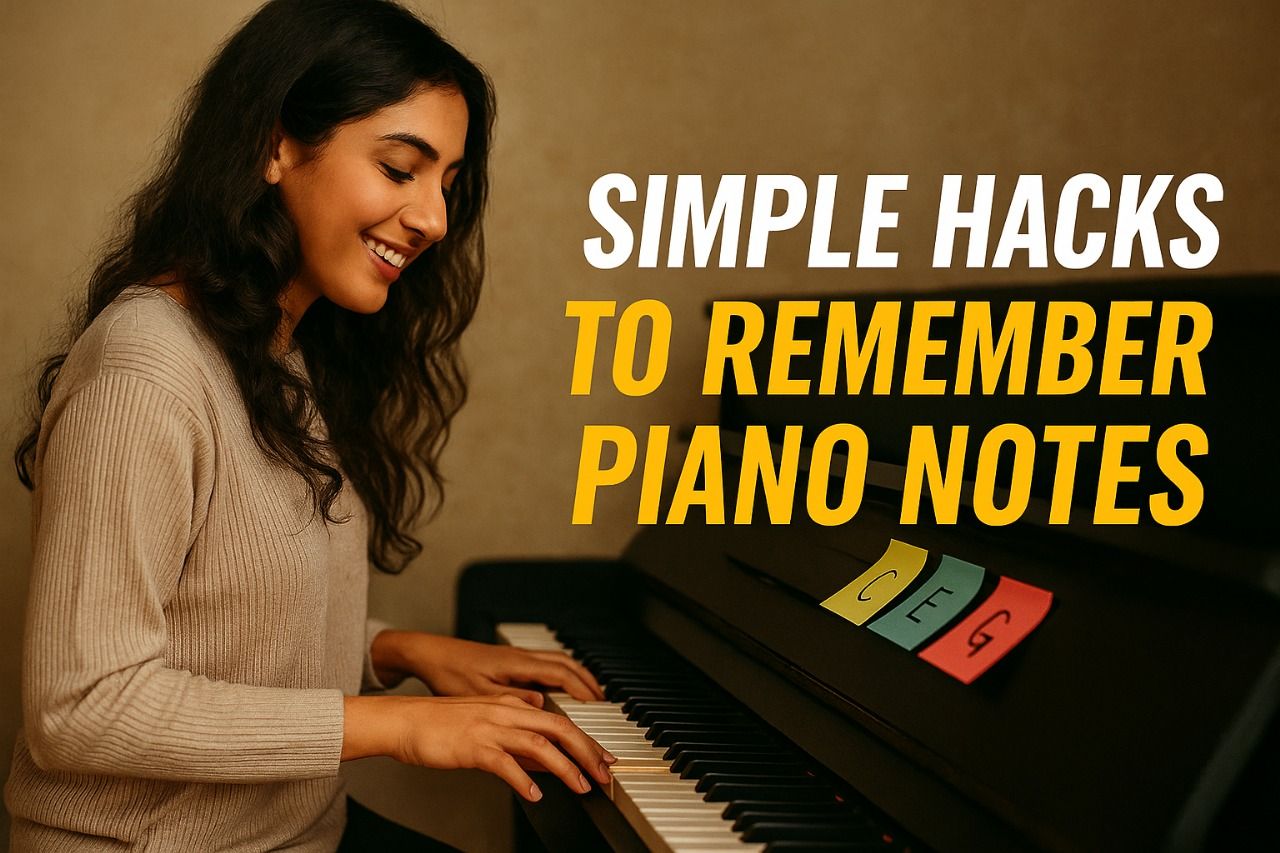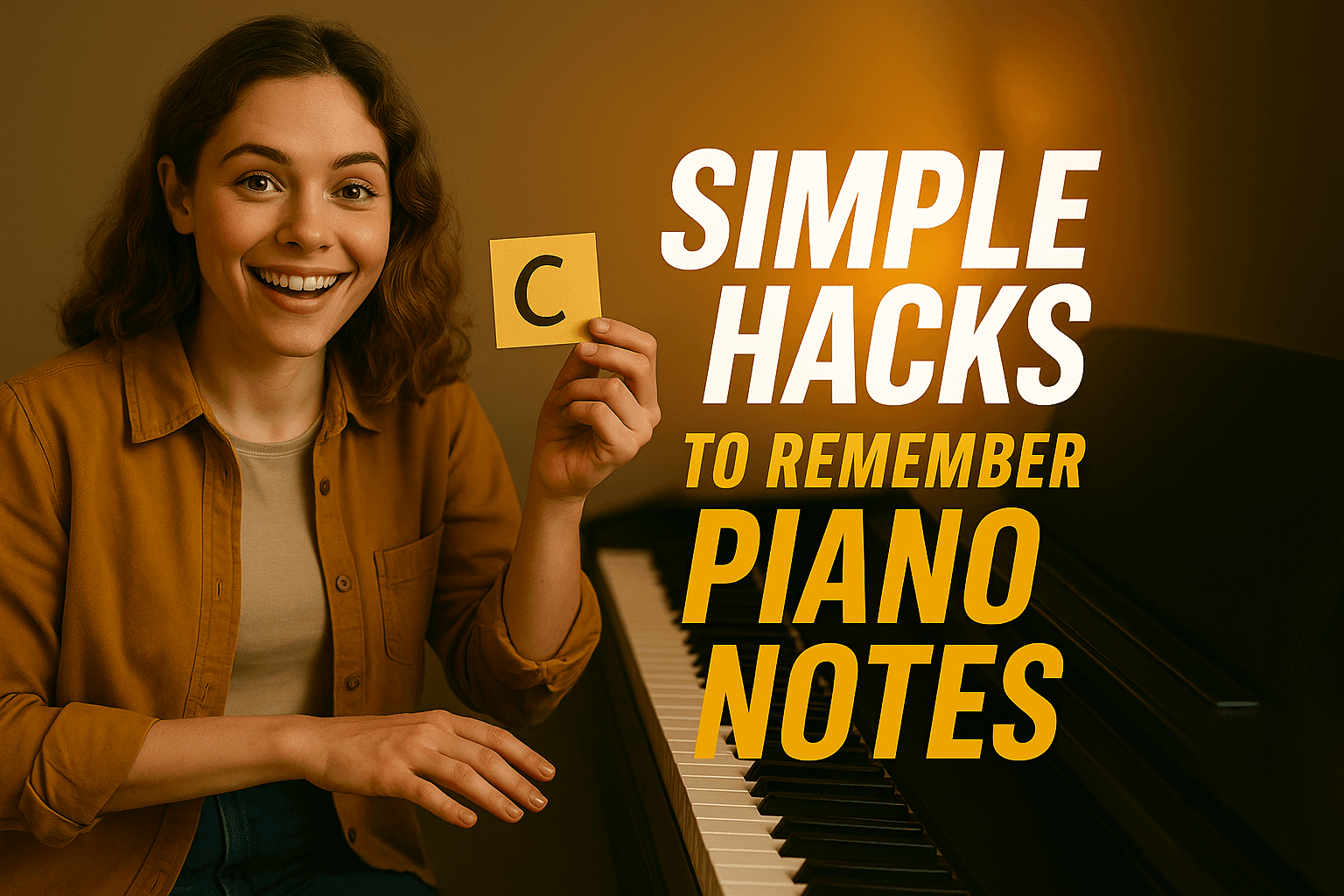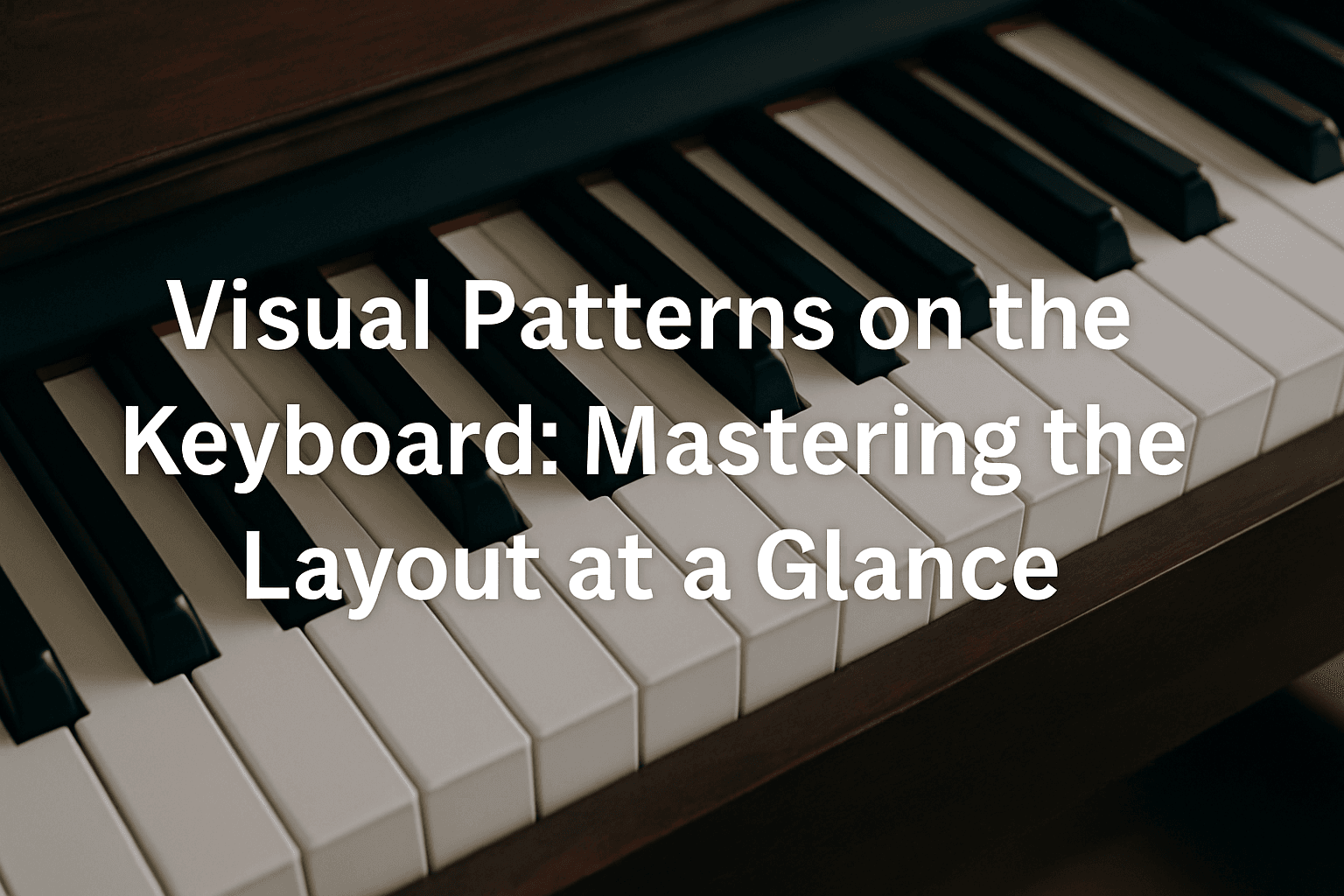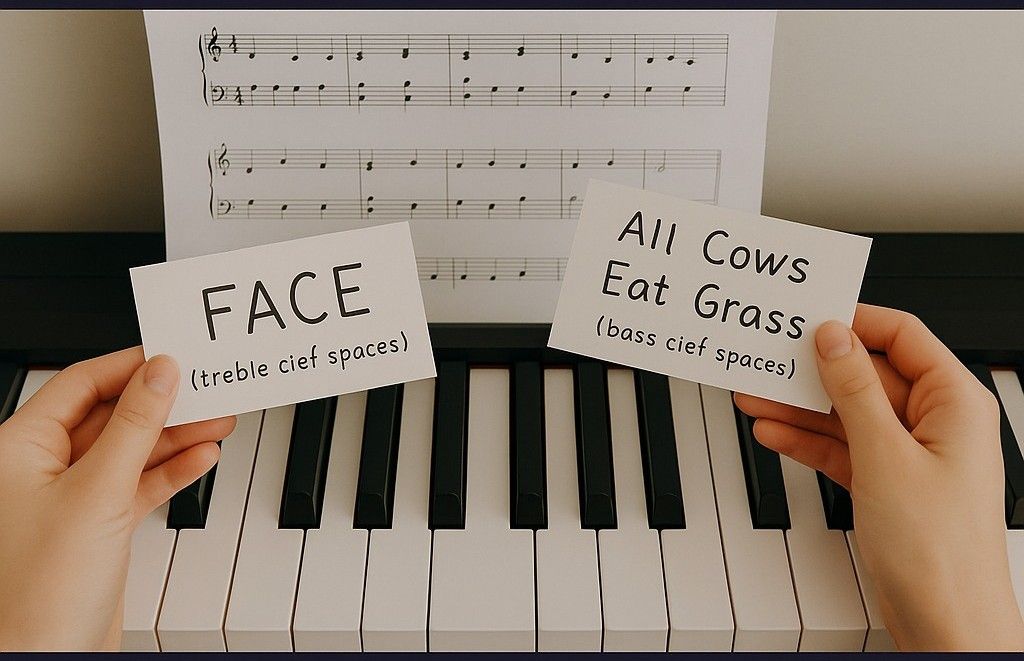
Art Gharana — 5 Mins read
Shruti Petti: A Traditional Musical Instrument
Musical Instruments

Have you ever sat at a piano, mesmerized by its keys, only to feel overwhelmed when trying to remember which note is which? You're not alone. Whether you're just starting your musical journey or revisiting it after a break, learning the notes on a piano can feel confusing at first—but it doesn’t have to be.
In today’s digital age, you no longer need to rely on expensive one-on-one sessions or thick music theory books. With beginner piano lessons and online piano classes readily available, learning to play (and remember) notes can be both fun and accessible from the comfort of your home. At ArtGharana, for example, thousands of students are discovering how to remember piano notes with simple, proven techniques.
This blog dives deep into hacks that actually work—from memory tricks to visual cues—to help you quickly and confidently recall every note on the keyboard. We'll also explore interactive tools, practice habits, and bonus resources like free trial piano classes to kickstart your learning experience.
So, if you've been searching for “piano classes near me” or wondering if it's possible to learn piano online, this guide is your perfect starting point. Let's unlock the keys to your musical memory—one note at a time.

Let’s start with a simple truth: You don’t need to be a music theory expert to understand piano notes. If you’ve ever looked at a keyboard and thought, "Where do I even begin?"—you’re in the right place.
Mastering the basics of piano notes sets the foundation for everything you’ll play, whether you’re exploring classical melodies or just trying to play your favorite song. With piano lessons for beginners now more accessible than ever through online piano classes, getting started has never been easier—or more enjoyable.
The piano only uses seven letters: A, B, C, D, E, F, and G. Once you reach G, the notes repeat in the same pattern across the keyboard. This is what’s called an octave.
Once you recognize this pattern, identifying notes becomes second nature.
One of the easiest ways to remember notes on a piano is by understanding the visual layout:
These black key groupings act like road signs. For instance:
Once you see these patterns, you'll wonder why it ever seemed complicated.
Middle C is your home base. It sits roughly in the center of your keyboard and serves as a great reference point when learning new songs or scales. It's often the starting note in beginner piano lessons.
Try this:
Once you’ve found it, you’ve officially started your journey!
Understanding octaves helps you know where you are on the keyboard at all times. Each C, D, E (and so on) repeats across the keyboard, just at different pitches. Recognizing these shifts:
Want to put this into practice? Check out this list of beginner-friendly piano songs that emphasize note recognition.
With these foundational concepts, you're already ahead of most first-time learners. If you're ready to move beyond the basics and dive into real playing, explore our online piano and keyboard classes, crafted for beginners just like you.
Still unsure? Book a free trial class and see just how fun learning piano can be.

Ever looked at a piano and felt overwhelmed by the sea of black and white keys? You’re not alone. One of the simplest yet most overlooked hacks to remember piano notes is learning to recognize visual patterns on the keyboard. Once you spot them, the entire instrument becomes much easier to navigate.
Whether you're enrolled in virtual piano lessons or learning at your own pace, these visual cues will accelerate your ability to identify notes instantly.
The black keys are arranged in alternating groups of twos and threes, and this is the key (pun intended!) to unlocking note recognition. Here’s how to use them:
Find any group of two black keys: 1. The white key just to the left is C 2. The white key just to the right is E
Find any group of three black keys: 1. The white key to the left of the group is F 2. The key between the second and third black keys is A
Once you’ve mastered this, you’ll never get lost on the keyboard again.
Pianos are incredibly symmetrical. This means that what you learn in one octave applies across the entire keyboard.
Let’s break it down:
Each octave contains seven white keys (A to G) and five black keys (sharps/flats)
These notes repeat predictably across the board
This repetition makes it easier to transfer your knowledge as you progress from beginner to intermediate levels—especially helpful if you're taking piano lessons for beginners online.
Middle C isn’t just another note—it’s the anchor point of your piano learning journey. Most online and offline lessons start from here because it divides the keyboard into left and right hand zones.
Here’s a quick trick: Look for the group of two black keys near the center of your keyboard. The white key just to the left? That’s Middle C. From here, notes progress alphabetically (C, D, E, F, G, A, B) before repeating.
Still unsure? Check out this interactive online piano class that guides you through this hands-on.
Using visual patterns allows your brain to associate positions on the keyboard with specific notes. This kind of spatial recognition is especially helpful in online keyboard classes in the USA, where visual demonstrations replace physical guidance.
Pair this method with the right instructor, and you’ll gain muscle memory faster than you think.
By understanding the keyboard’s layout and leveraging these visual cues, you're not just memorizing notes—you're learning how to see music. Want to try these techniques with a real instructor? Book your free trial class and see how quickly the keyboard starts to make sense.

Struggling to remember which note is which? Don’t worry—this is one of the most common challenges piano learners face. The good news is that there are simple, smart strategies to help you lock in those notes for good. Whether you're diving into beginner piano lessons or revisiting your musical goals after a break, these memory hacks will keep your learning journey smooth and enjoyable.
These techniques aren’t just about memorization—they’re about making your brain connect with the keyboard in a meaningful way.
Mnemonics are fun, quirky, and surprisingly effective. For white keys:
Treble clef lines (E–G–B–D–F): “Every Good Boy Deserves Fudge”
Treble clef spaces (F–A–C–E): That one’s easy—just remember “FACE”
For bass clef lines (G–B–D–F–A): “Good Boys Do Fine Always” For bass clef spaces (A–C–E–G): “All Cows Eat Grass”
These simple phrases are commonly used in online piano classes for beginners because they work wonders for long-term memory.
The visual layout of the piano gives you natural anchors. For instance:
Want to reinforce these cues through practice? Our online piano and keyboard classes walk you through this step-by-step.
Songs with piano letter notes can fast-track your learning. Playing music you recognize while reading letter notes helps reinforce what each note sounds and feels like.
Try simple songs like:
Need a ready-made list of beginner pieces? Here’s a curated beginner-friendly piano song guide that’s perfect for practice.
Repetition is powerful—but boring drills don’t help anyone stay motivated. Instead:
This approach helps you retain notes faster, especially if you’re juggling a busy schedule and need short, focused sessions.
Memory improves when you involve multiple senses:
This method is used often in virtual piano lessons to boost cognitive association.
By using these memory tricks consistently, you’ll soon stop thinking about each note—and start feeling your way through the music. Ready to experience this in action? Book your free trial piano class and let a live instructor guide you through these techniques in real time.